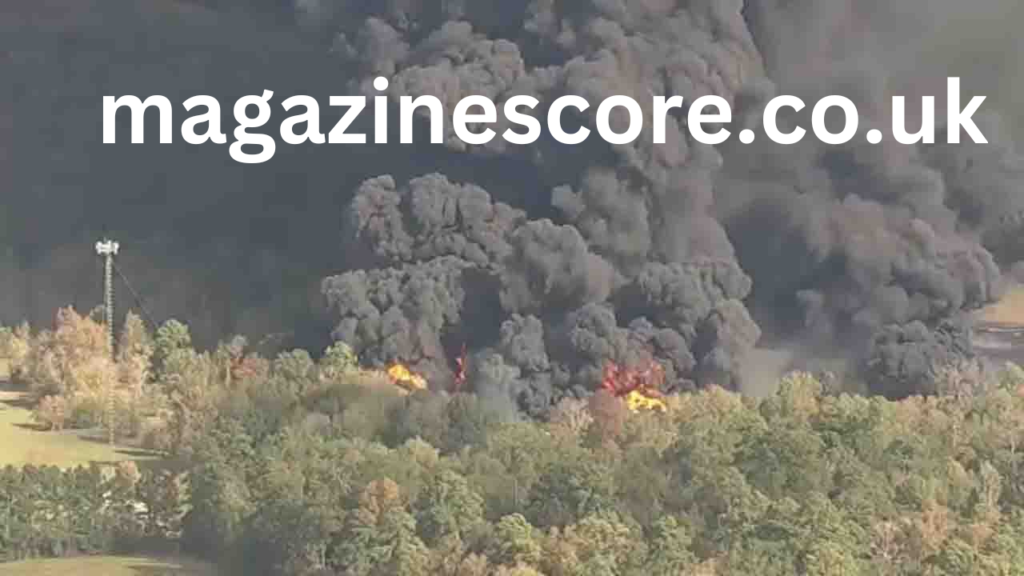Chemical plant explosions are among the most catastrophic industrial accidents. When they occur, they often result in significant loss of life, widespread environmental damage, and massive economic costs. These explosions can devastate communities, shake industries, and spark global conversations about industrial safety and regulatory oversight.
This article delves into the multifaceted aspects of chemical explosions—examining the causes, high-profile incidents, consequences, regulatory landscapes, preventive strategies, and the path forward toward a safer industrial future.
1. Understanding Chemical Plant Explosions
Chemical plants are facilities where hazardous substances like flammable gases, toxic liquids, and reactive solids are produced, stored, or processed. These substances, under certain conditions, can lead to dangerous reactions, including explosions.
What Triggers an Explosion?
Several mechanisms can cause a chemical plant explosion, including:
- Gas leaks: Accumulated flammable gases (e.g., methane, propane) can ignite due to a spark or static discharge.
- Chemical reactions: Uncontrolled or unintended chemical reactions can rapidly release energy.
- Equipment failure: Malfunctioning reactors, pipes, or valves can cause pressure buildup.
- Human error: Improper handling, poor maintenance, or bypassing safety protocols.
- Natural factors: Lightning strikes, earthquakes, or extreme weather disrupting containment systems.
2. Case Studies: Notable Chemical Explosions
Understanding real-world incidents helps illustrate the complexity and scale of chemical explosions. Here are a few notable events:
A. Bhopal Gas Tragedy (India, 1984)
Arguably the world’s worst industrial disaster, the Bhopal incident involved a leak of methyl isocyanate (MIC) gas from the Union Carbide India Limited pesticide plant. Over 500,000 people were exposed, with more than 15,000 dying in the following weeks and thousands more suffering lifelong health effects.
Root Causes:
- Poor maintenance
- Inadequate safety systems
- Lack of emergency preparedness
B. Texas City Refinery Explosion (USA, 2005)
A massive explosion occurred at a BP refinery in Texas City, killing 15 workers and injuring over 180. The cause was a hydrocarbon vapor cloud igniting during the startup of a distillation unit.
Key Failures:
- Faulty equipment
- Inadequate training
- Poor safety culture
C. Tianjin Explosions (China, 2015)
A series of explosions at a container storage station in Tianjin port resulted in 173 deaths. The blast was so powerful it registered as a seismic event and caused massive destruction.
Violations:
- Illegal storage of sodium cyanide
- Mislabeling hazardous materials
- Poor government oversight
D. Recent Incidents (2023–2025)
- Scotia, California (2025): A biomass plant explosion injured a worker during routine maintenance.
- Sangareddy, India (2024): Reactor explosion killed 4, injured 16.
- Neustadt, Germany (2025): Explosion at a refinery injured 4 workers.
These examples reflect ongoing safety gaps in both developing and developed nations.
Previous article; Amazon jobs anniston Opportunities, Growth, and What You Need to Know
3. The Human and Environmental Toll
Casualties and Injuries
Most explosions result in fatalities and severe injuries—burns, respiratory damage, amputations, and psychological trauma. First responders are also at risk during rescue operations.
Environmental Contamination
Chemical explosions often release toxins into air, water, and soil, affecting:
- Local water supplies
- Agriculture and food chains
- Wildlife and biodiversity
For instance, chemical plant explosion post-Bhopal, contaminated soil and groundwater continue to pose risks decades later.
Economic Damage
The financial cost includes:
- Facility damage
- Compensation claims
- Cleanup and environmental remediation
- Fines and legal fees
- Lost productivity
BP paid over $2 billion in settlements after the Texas City incident, not including repair costs.
4. Root Causes and Systemic Failures
1. Inadequate Safety Measures
- Lack of fire suppression systems
- Infrequent safety drills
- Outdated or poorly maintained equipment
2. Lax Regulatory Oversight
- Poor enforcement of safety standards
- Corruption and misreporting
- Inconsistent inspection regimes
3. Human Error
- Improper chemical handling
- Inaccurate documentation
- Failure to follow procedures
4. Corporate Negligence
- Cutting corners to save costs
- Failing to implement known safety upgrades
- Ignoring internal warnings
5. Regulatory Framework and Safety Standards
United States (OSHA, EPA)
- OSHA’s Process Safety Management (PSM) standard regulates handling of hazardous chemicals.
- EPA’s Risk Management Plan (RMP) Rule mandates hazard assessment, prevention programs, and emergency response.
European Union (SEVESO Directive)
The SEVESO III Directive ensures that facilities with dangerous substances take all necessary measures to prevent major accidents.
India (Factories Act, 1948)
Post-Bhopal, India introduced stricter laws and the Environment Protection Act (1986), yet enforcement remains inconsistent.
International Guidelines
- International Labour Organization (ILO)
- UN Globally Harmonized System (GHS)
- NFPA (National Fire Protection Association)
Despite these, compliance varies widely, especially in developing nations.
6. Technological Solutions and Preventive Strategies
1. Advanced Monitoring Systems
- IoT-based sensors for real-time leak detection
- Pressure, temperature, and gas monitoring systems
2. Automation and AI
- AI-driven process controls can detect anomalies
- Predictive maintenance to prevent equipment failure
3. Safety Culture and Training chemical plant explosion
- Routine training for all staff
- Transparent reporting and near-miss tracking
- Leadership accountability
4. Emergency Preparedness
- On-site firefighting systems
- Clear evacuation plans
- Coordination with local hospitals and fire departments
7. Community Involvement and Environmental Justice
Often, chemical plants are located near low-income or marginalized communities who bear the brunt of the risks. This raises critical environmental justice questions:
- Are communities informed about nearby chemical hazards?
- Do they have access to evacuation plans?
- Are their health outcomes monitored long-term?
For instance, in Louisiana’s “Cancer Alley,” predominantly Black communities suffer higher cancer rates attributed to prolonged exposure to industrial pollution.
8. Legal and Ethical Considerations
Liability and Accountability
- Civil and criminal charges against negligent corporations
- Lawsuits from victims and affected communities
Whistleblower Protections
- Encouraging employees to report unsafe practices
- Ensuring retaliation-free environments
Transparency
- Public disclosure of safety violations
- Independent audits and third-party inspections
9. Future Outlook: Towards a Safer Chemical Industry
As industrial operations scale globally, preventing chemical plant explosions is more urgent than ever.
Trends to Watch:
- Green chemistry: Safer, eco-friendly chemical processes
- Decentralization: Smaller, modular chemical units reduce risk
- Digital twins: Simulated plant models to test safety scenarios
- Global collaboration: Unified standards across borders
Governments, corporations, and civil society must work in tandem to balance industrial progress with public safety.
Conclusion
Chemical plant explosions are not inevitable—they are preventable. Every incident is a sobering reminder of what happens when safety takes a back seat to profit, negligence, or complacency. As technology evolves, so must our commitment to proactive risk management, rigorous enforcement of safety protocols, and a culture of transparency and accountability.
Lives depend on it. Communities depend on it. The future of safe industrialization depends on it.









